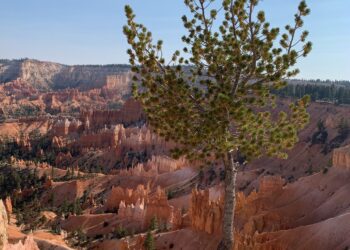By Doug Chabot GNFAC Director
I hear the wildest things. People share their tales of near-death on social media. During classes students explain their adventurous avalanche experiences. Even coffee shop java junkies will freely tell of their exploits. I listen to these stories because they are entertaining and to glean nuggets of critical snowpack information. Occasionally, laced within these tales are myths about avalanches. All of us hold dear certain myths about our world, me included, like believing caffeine isn’t really a drug or that I’ll cramp up and drown if I go swimming within an hour of eating lunch, a myth courtesy of my mom.
Avalanche forecasters dispel myths about avalanches so everyone can make better decisions about traveling in avalanche terrain.
Avalanches strike without warning.
Ninety percent of avalanche accidents are triggered by the victims or someone in their party. Rarely are they hapless victims. Avalanches, unlike earthquakes which strike with little warning are typically preceded by obvious signs of instability such as previous avalanches and collapsing or cracking of the snowpack. If we know what to look for, we can see patterns and recognize warning signs of dangerous avalanche conditions.
I can outrun an avalanche.
If luck is on your side, sometimes this is possible, but avalanches can accelerate quickly and easily reach speeds over 80 mph. Snowmobilers have better odds than skiers of outrunning a slide if they’re facing downhill and low on the slope. Even with a throttle at your disposal the odds are not good. It doesn’t matter how big an engine you have or how fast you can point your skis downhill, the accident literature is littered with burials and fatalities of folks who thought they could outrun a slide.
Tracks on a slope mean it is safe.
This is a common and incorrect assumption. If a slope has a widespread weak layer, it is possible to trigger an avalanche, even on a slope with hundreds of tracks. This has happened more than once on Saddle Peak in the Bridger Range. Snow depth is not uniform and slopes harbor both deep and thinner areas. A skier or sledder might not affect a deeply buried weak layer but trigger a thinner area of the same slope. An avalanche released on a thin spot could propagate into deeper snow and wipe out a winter’s worth of tracks. Previous tracks have lured many avalanche victims into thinking the slope was safe.
This slope never slides.
It is naïve to think that just because you have not seen a slope avalanche it never will. A snowy slope steeper than 30 degrees is avalanche terrain and could slide if unstable conditions exist. If the ingredients for an avalanche are present (a steep slope with a slab of snow overlying a weak layer) then all that is missing is you, the trigger.
The noise of my snowmobile triggered the slope.
This is a popular myth. Noise does not exert enough force onto the snowpack to trigger a slide. If noise were powerful enough to trigger slides our snowmobiles would knock us to the ground every time we started them. The combined weight of a rider and machine on the snowpack is the trigger, not the noise.
If I get caught, I can dig myself out.
Avalanche debris sets up like concrete. Even light powder forms avalanche debris so dense that moving a hand is near impossible. A buried victim is helpless and has to rely on a partner for rescue, provided both were carrying avalanche transceivers, a probe and a shovel.
Throw out myths and embrace reality. There is no excuse to thinking, “Hey, let’s hit this slope! It’s already got tracks on it, plus it never slides anyway. Even if the noise of my machine triggers it, I can always outrun it, or if I’m really unlucky at least dig myself out.” You are smarter than that.
Doug Chabot, director of the Gallatin National Forest Avalanche Center, received his B.A. in Outdoor Education from Prescott College in 1986. From 1990 to 1999 he worked as a professional ski patroller at Bridger Bowl Ski Area in Bozeman, Montana. Starting in 1995 Chabot has worked for the GNFAC as an avalanche specialist. He’s also a mountain guide and climber.
















